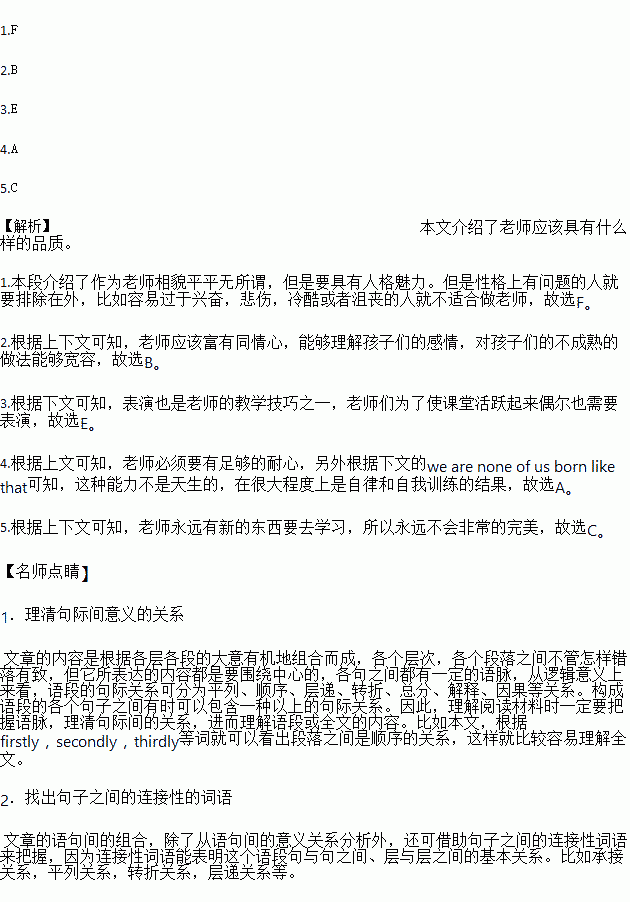题目内容
What personal qualities are desirable in a teacher?I think the following would be generally accepted.
Firstly,the teacher's personality should be lively and attractive. This does not rule out people who are plain?looking,or even ugly,because many such people have great personal charm. 1..
Secondly,it is not merely desirable but essential for a teacher to have a capacity for sympathy,a capacity to understand the minds and feelings of children. 2.—not of what is wrong,but of the weaknesses and immaturity of children,which cause them to make mistakes.
Thirdly,I hold it essential for a teacher to be both intellectually and morally honest. This means that he will be aware of his intellectual strengths and limitations,and will have thought about and decided upon the moral principles by which his life shall be guided. 3.. That is part of the technique of teaching,which demands that every now and then a teacher should be able to put on an act—to enliven(使生动)a lesson,correct a fault,or award praise.
A teacher must be capable of infinite patience. 4.,for we are none of us born like that.
Finally,I think a teacher should have the kind of mind which always wants to go on learning. 5.;there is always something more to learn about. There are three principal objects of study:the subjects which the teacher is teaching;the methods by which the subjects can best be taught to the particular pupils in the classes he is teaching;most importantly,the children,young people,or adults to whom the subjects are to be taught.
A.This,I may say,is largely a matter of self?discipline and self?training
B.Closely related to this is the capacity to be tolerant
C. Teaching is a job at which one will never be perfect
D.Children,especially young children,live in a world that is rather larger than life
E.There is no contradiction (自相矛盾)in my going on to say that a teacher should be a bit of an actor
F.But it does rule out such types as the over?excitable,sad,cold,and frustrated
G.There are two fundamental principles of British education today
 培优好卷单元加期末卷系列答案
培优好卷单元加期末卷系列答案
